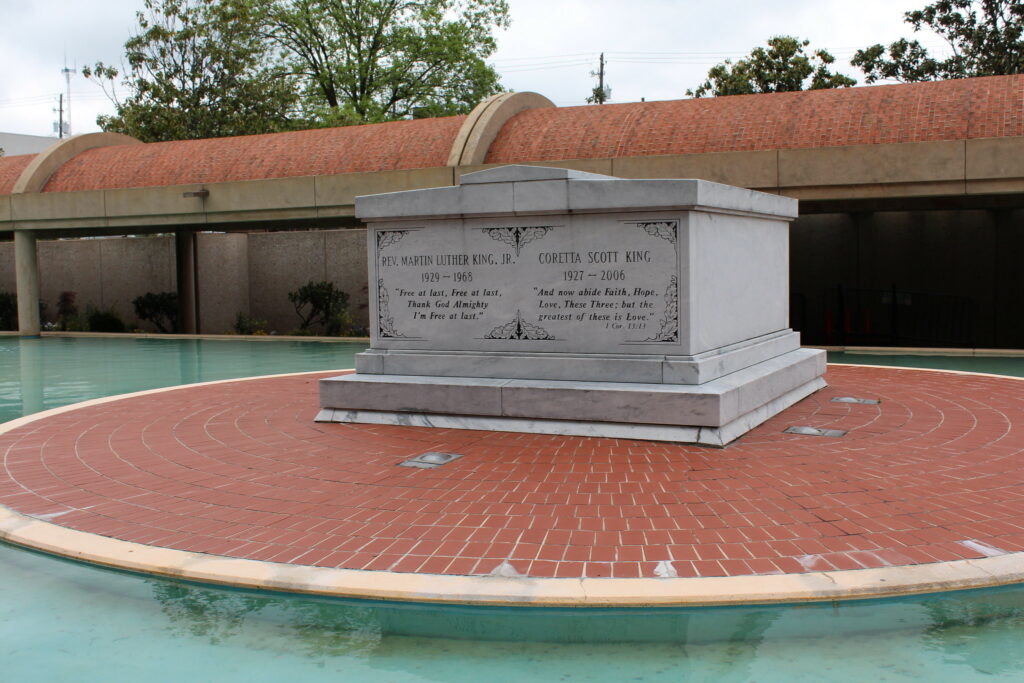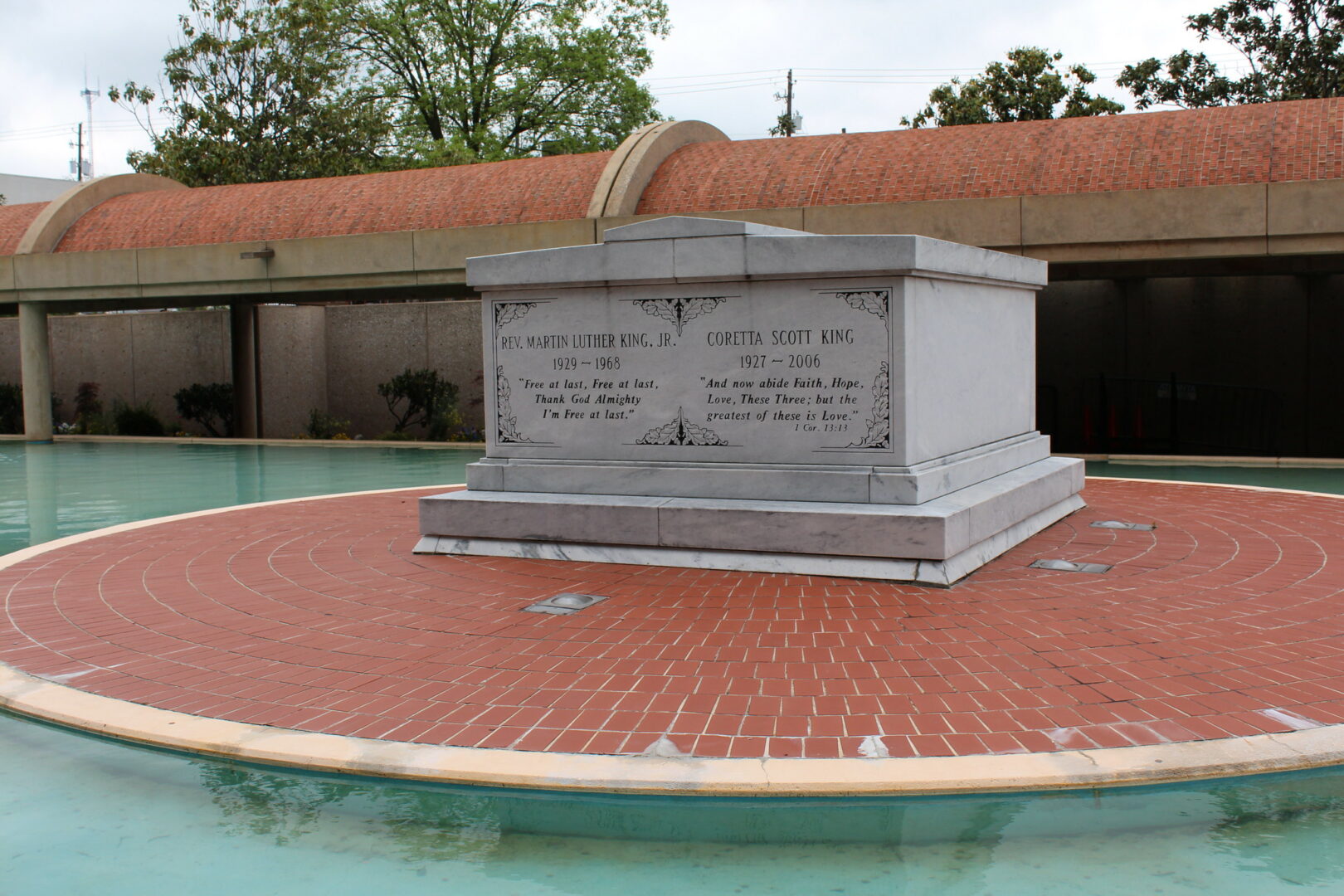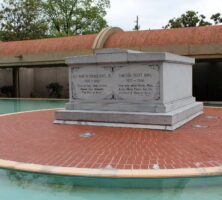The Martin Luther King Jr. Center for Nonviolent Social Change originated in the weeks after the 1968 assassination of civil rights leader Martin Luther King Jr. His widow, Coretta Scott King, proposed that a living monument be placed in the Auburn Avenue Historic District in Atlanta, and her vision of a memorial found fruition as the King Center, which is now managed, along with related sites, by the National Park Service.
King’s heirs initially organized the Martin Luther King Jr. Memorial Center, which Coretta King managed as chief executive officer from the basement of her home at 234 Sunset Drive in Vine City. King’s sister, Christine King Farris, served as treasurer of the organization, which filed for nonprofit status and changed its name in the early 1970s to the Martin Luther King Jr. Center for Social Change. The organization took its current name in the early 1980s.
Reflecting the desire to keep alive King’s philosophy of nonviolence, the center proposed to manage a library and archives, tentatively to be housed on the campus of the Atlanta University Center. To add to the archives, the King estate launched an unsuccessful court battle to reclaim personal papers that King had donated to Boston University in 1964. In 1969 the Ford Foundation gave $100,000 to finance the first of many documentation projects designed to inventory King’s manuscripts housed in Atlanta. The center also promoted King’s January 15 birthday as a state and federal holiday, to be observed in a manner similar to those for U.S. presidents George Washington and Abraham Lincoln, but with an agenda of advocating social and economic change.
In 1970 the King heirs dedicated the first installment of the Auburn Avenue King Center complex. During the dedication ceremony, King’s remains were relocated to a marble sarcophagus next to Ebenezer Baptist Church, where King’s maternal grandfather, King’s father, and King himself had preached. Within five years Coretta Scott King broke ground for an administrative building to house the library and archives. The building was designed, constructed, and funded by three African American–owned companies: Atlanta Life Insurance Company, Bond Rider James, and Russell Construction Company. In 1974 the federal government added the King historic district, including Ebenezer Baptist and King’s birth home on Auburn Avenue, to the National Register of Historic Places. More structures were included in the National Register designation in 1980.

Image from Wally Gobetz
In 1975 Atlanta’s first African American mayor, Maynard Jackson, announced the city’s plan to build a community center that would be named after King and located across the street from his grave site. To supplement the social services offered there, the King Center managed a day care. By the observance of King Day in 1977, the center had completed the Interfaith Peace Chapel, with its reflecting pool surrounding King’s crypt. Later that year the King estate opened King’s restored birth home to tours, which show the house as it appeared from 1929 to 1941, when King lived there.
The election of Jimmy Carter as U.S. president in 1976 initiated the final construction phase of the King Center’s complex, as the federal government actively participated in fund-raising to complete the Bond Rider James design. Carter joined industrialist Henry Ford II in raising $8 million to finance Freedom Hall, for which the King Center broke ground in 1979. The structure opened in 1981 and contains an auditorium, classrooms, and a gift shop.
During and after U.S. president Ronald Reagan’s two terms in the 1980s, the King Center engaged in a variety of social reform movements, from advocating nonviolent sanctions against South Africa in the fight against apartheid to promoting nuclear disarmament. Although the organization has suffered from financial difficulties, as well as a public disagreement with the National Park Service over a federal visitors’ center and interpretative site constructed for the Olympic Games in 1996, the memorial nonetheless remains one of Georgia’s top tourist attractions.
In January 2006 Coretta Scott King died and was buried next to her husband in the crypt at the King Center.






